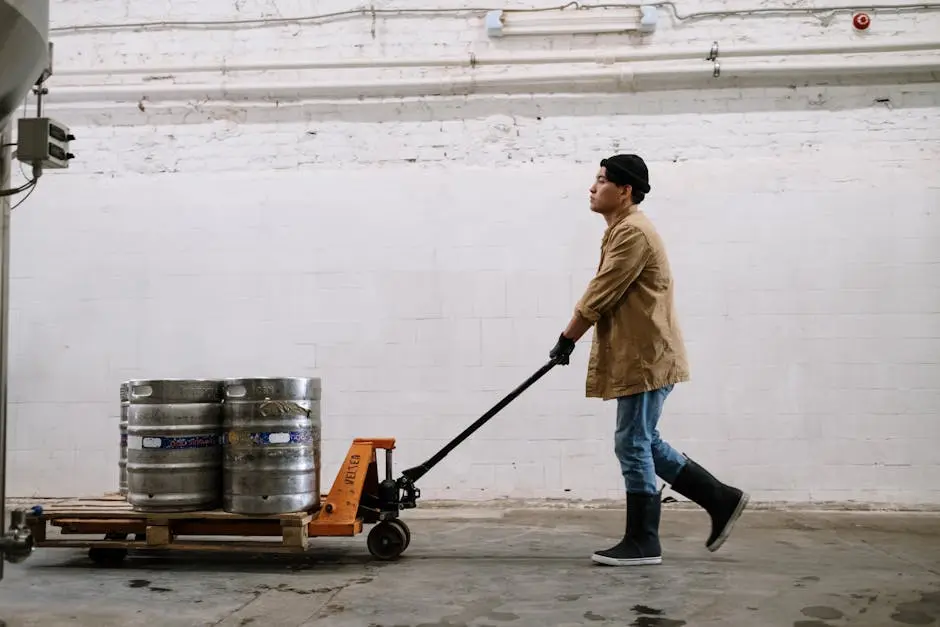12 Must-Have Features in Work Boots for Men This Season
Share
Finding the perfect pair of work boots can make all the difference in comfort, safety, and performance on the job. Whether you’re navigating a construction site or standing all day, having the right features in your work boots can enhance your work experience this season. Let’s dive into the essential features that every man should look for when shopping for work boots.
1. Durable Materials for Longevity
Quality material plays a significant role in the longevity of work boots. Look for boots made from full-grain leather or other durable materials that can withstand wear and tear over time. Full-grain leather is renowned for its resilience and ability to repel water, making it ideal for rough environments. Considering the advancements in material technology, work boots today incorporate synthetic fibers and composite materials that offer additional benefits, such as increased breathability and reduced weight, without compromising durability.
Moreover, the construction method of the boots also affects their durability. Goodyear welted or direct attach constructed boots add more life to the footwear by providing robust binding. Boots with welt construction often offer better resole options, extending their useful life even further. So, when you’re searching for the right pair, investigate these construction aspects to ensure you get maximum longevity from your investment.
2. Comfort and Cushioning for All-Day Wear
Comfort is key when wearing work boots all day. Features like padded collars, cushioned insoles, and shock-absorbing midsoles can provide the support and comfort needed for long hours on your feet. Many modern designs incorporate memory foam footbeds, which conform to the shape of your foot for personalized support and cushioning. This adaptation not only improves comfort but also helps prevent common foot problems such as plantar fasciitis.
Ergonomic designs in work boots are becoming more prevalent, ensuring minimal strain on your foot arches and supporting proper posture during prolonged standing. Look for boots with arch support or those designed to accommodate orthotic inserts if you have specific foot conditions. Ultimately, the right padding and cushioning technology can make a world of difference, significantly reducing fatigue and enhancing productivity throughout the workday.
3. Water Resistance for Wet Environments
Water-resistant or waterproof boots are essential if you’re working in wet or damp conditions. Look for boots with sealed seams or waterproof linings to keep your feet dry and comfortable. For professions that face frequent exposure to wet environments, boots with an external waterproof treatment offer an extra layer of protection. Furthermore, the development of waterproof breathable membranes has advanced significantly, allowing water vapor to escape while blocking water ingress, thus maintaining a comfortable climate inside the boot.
To maintain the waterproof capabilities of your boots, regular maintenance is crucial. Applying the appropriate water repellent treatments can prolong their water resistance. Every few months, clean your boots thoroughly and treat them with a leather conditioner to maintain flexibility and waterproof properties. Ensuring that this feature is well-maintained will extend the life span of your boots, keeping you dry and comfortable throughout their use.
4. Slip-Resistant Outsoles for Safety
A slip-resistant outsole is crucial to prevent accidents and ensure stability on slippery surfaces. Check for soles with deep treads for optimal grip and traction. These treads are particularly beneficial in environments like construction sites and warehouses, where oil, water, and loose gravel are common hazards. Scientific studies on slip resistance highlight how different sole patterns can significantly reduce the risk of slip-related injuries by improving slip resistance performance.
5. Steel Toe Protection for Safety
Steel toe boots offer essential protection against heavy impacts and compression. If your work involves heavy lifting or machinery, steel toe protection is a must. These boots are designed to withstand significant force, providing ample protection that can prevent serious worksite injuries. In addition to steel toe caps, boots can also feature composite toe designs for a lighter, yet equally protective solution. This innovation is ideal for those who need protection but prefer lighter footwear.
An important consideration is the industry standards they meet, like ASTM or ISO certifications, which ensure that the steel toes have undergone rigorous testing. This assures you of their effectiveness in preventing accidents. Depending on your work environment’s specific requirements, you may also look for other protective features such as metatarsal guards or puncture-resistant plates to complement steel toe protection.
6. Breathability for Foot Health
Breathability is important to prevent sweat buildup and odor in work boots. Look for features like mesh linings or moisture-wicking materials to keep your feet fresh. Effective moisture management not only enhances comfort but also prevents the growth of bacteria and fungi that thrive in damp environments. Advances in material science have introduced innovative, breathable materials that significantly improve air circulation without compromising the boots’ durability or structural integrity.
Additionally, incorporating a regular hygiene routine, such as alternating pairs of boots and regularly airing them out, can help maintain foot health. For maximum breathability, consider boots designed with perforated uppers or mesh panels that enhance airflow, significantly boosting foot coolness on hot workdays.
7. Electrical Hazard Protection for Safety
For those working around electrical hazards, boots that offer electrical hazard protection can be lifesaving. These boots are designed to reduce the risk of electric shock by preventing the flow of electricity through the boot. Materials like rubber and specific synthetics provide the necessary insulation to keep you safe. While selecting, ensure your boots meet the necessary standards such as ASTM F2413-18, which outlines specific requirements for resistant footwear.
8. Lightweight Options for Less Fatigue
Lightweight boots help reduce fatigue over long hours. Consider boots made with advanced materials that offer strength without added weight. Composite materials, like Kevlar and carbon fiber, have become favorites for their impressive durability-to-weight ratio. They provide sufficient protection while maintaining comfort through extended wear. This innovation allows workers to sustain energy and perform efficiently, particularly in jobs that demand high mobility like warehouse operations and delivery services.
9. Insulation for Cold Environments
Insulation is key for those working in cold temperatures. Insulated boots can keep your feet warm and comfortable by trapping body heat. Thinsulate or fleece linings are popular choices, providing reliable warmth without excessive bulkiness. Over the years, insulation technologies have evolved, balancing warmth with moisture control, ensuring feet remain dry even as body heat is retained.
To achieve an optimal balance of warmth and comfort, consider combining insulated boots with thermal socks. The synergy between the two offers additional protection against frigid working conditions. For jobs requiring frequent transitions between indoor and outdoor settings, boots that offer removable insulation layers can be a flexible and practical choice.
10. Ease of Maintenance for Convenience
Easy-to-clean boots extend the life of your footwear. Look for materials and finishes that require minimal maintenance, saving time and effort. Leather and synthetic uppers with a smooth finish not only look stylish but can be effectively cleaned with a quick wipe. Implementing a cleaning routine, involving simple products like water and mild soap, can preserve the appearance and performance of your boots.
11. Ankle Support for Proper Protection
Good ankle support helps maintain balance and prevent injuries. High-cut boots provide necessary support, especially on uneven terrains. For workers involved in roofing, forestry, or any activity requiring ladder work, reinforced ankle support is invaluable. With additional features like heel counters and shanks, these boots offer both support and stability, reducing the risk of sprains and twisted ankles.
12. Flexible Soles for Natural Movement
Flexible soles allow for a more natural foot movement, enhancing comfort and agility. Ensure the soles are both sturdy and flexible for the best performance. Certain ergonomic designs also incorporate flex grooves for enhanced foot movement. This feature is particularly beneficial in environments that require frequent squatting, such as maintenance or landscaping work, where unrestricted movement can aid efficiency and reduce strain on the lower body.

